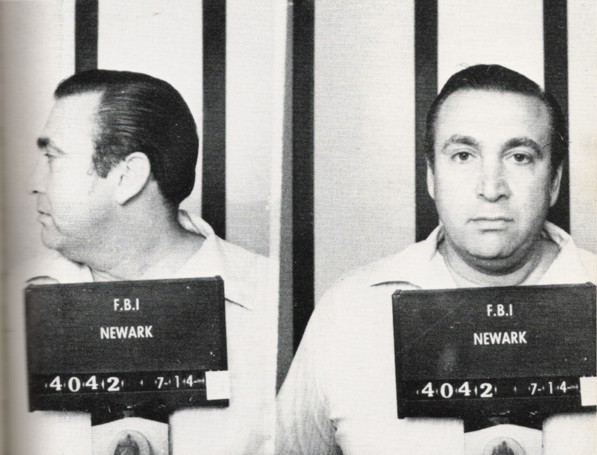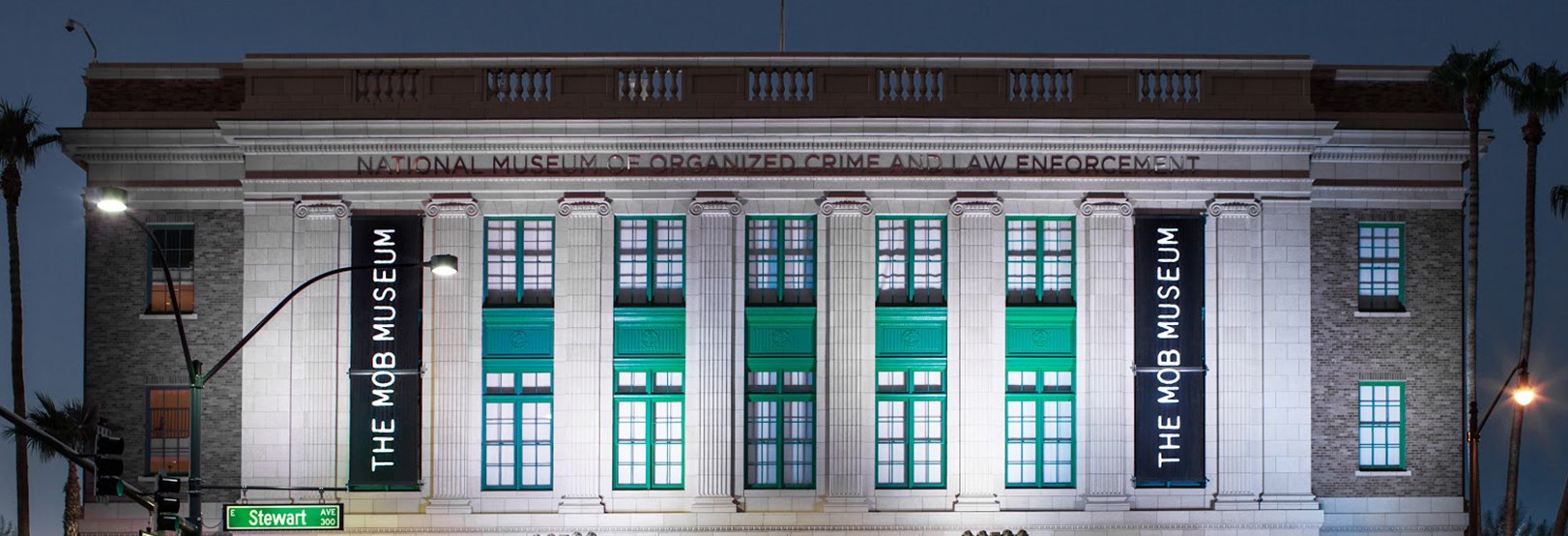Roy DeMeo: No. 3 on list of Top 5 most notorious Mob hitmen
Former butcher led demented hit squad that perfected method to eliminate victims

In this third installment in our series on the Top 5 most notorious Mob hitmen, we focus on a particularly gruesome era in the 1970s and early ’80s in the Brooklyn and Long Island areas of New York.
Our selections are limited and the methodology subjective. The richness of the stories, the amount of dependable research material and how the individuals fit into the greater context of their times mattered more to us than the number of victims they chalked up.
The Top 5 are: “Machine Gun” Jack McGurn, Abe “Kid Twist” Reles, Roy DeMeo, Joe “The Animal” Barboza and Giovanni Brusca.
Marked for death
In the days leading up to January 10, 1983, Roy DeMeo, the former butcher’s apprentice and creator of “the Gemini method” to dispose of murder victims for the Gambino crime family, felt trapped between a law enforcement task force pursuing him and members of his own crew who feared he’d turn on them to avoid a long prison sentence.

DeMeo dressed in a long overcoat with a pocket concealing a sawed-off shotgun. He drove the streets of Brooklyn in a new 1983 Cadillac registered in his wife’s name. In the trunk was a chandelier from his Long Island home he once intended to have repaired. But it was now far from his mind.
A few weeks before, a federal grand jury had subpoenaed DeMeo, for a second time, to testify in a racketeering case. He told his son Albert, whose 17th birthday was January 10, that his father was marked for death. A police investigation into the Gambinos’ profitable international car theft ring led to joint local and federal probes into a string of Mob homicides. A member of DeMeo’s car theft and hit crew, Vito Arena, had flipped and told federal prosecutors about several murders he participated in for DeMeo.
DeMeo himself or with his crew participated in more than 200 homicides almost without detection starting in the 1970s. In June 1982, Arena showed police where to find the body of one of the crew’s victims, a low-level hoodlum encased in a cement-filled oil barrel submerged in Moriches Bay off of Long Island.
Growing increasingly fearful, DeMeo likely heard rumors that Gambino boss Paul Castellano wanted to silence him. He discovered too late that the loyalty of his oldest and closest friends lay with the boss.
Lured to a garage in Brooklyn used by the car ring, the 42-year-old DeMeo met with his trusted comrade and mentor, Anthony “Nino” Gaggi, a Gambino capo 15 years his senior. He’d known Nino since 1965. But Nino had to obey Castellano’s hit command. No sooner had DeMeo removed his jacket than Nino opened fire. DeMeo tried to deflect the shots with his hands, but two slugs burst into his face. Other shooters — his colleagues in murder — probably helped inflict his total seven head wounds.
They carried his body and laid it in the trunk of the Cadillac, draping the chandelier over the corpse. They drove the car and left it in the lot of a bayside boat club in Brooklyn. With low winter temperatures, his body soon froze. Despite complaints, the auto remained parked there for 10 days until police towed it. Hours later, they opened the trunk. DeMeo’s family would later receive more than $1 million in property DeMeo had put in their names.
Rivaling Murder Inc.
Killings performed by DeMeo and his troop of sick sadists would rival that of Brooklyn’s Murder Inc. of the 1930s. If boss Castellano demanded a contract hit or “message-sending” murder — with the body dumped in public to serve as a warning — DeMeo and his paid goons were there to oblige. DeMeo was a loanshark, and with his crew made a fortune stealing luxury cars from New York streets — four to seven vehicles a night. The stolen cars were sold overseas. The team also pushed illegal drugs. He regularly kicked bundles of cash from the car ring up to Castellano.
DeMeo killed his first man in 1973 — Paul Rothenberg, New York’s premier distributor of pornographic movies who made extortion payments to DeMeo and Nino. Three weeks before, authorities had raided Rothenberg’s film processing business and questioned him about his bank checks to DeMeo. Nino ordered the hit. DeMeo tailed and led Rothenberg into an alley in Roslyn, Long Island, and fired a silenced .38-caliber handgun twice into his head.
That first rubout invigorated DeMeo’s simmering sociopathic demeanor. As a former butcher’s assistant, DeMeo bragged of possessing the skills to slice, chop and dismember hit victims for easy, unseen disposal. His perfected way of murdering and packaging bodies was named “the Gemini method” for the location and procedures used. The site of the butchering was the Gemini Lounge, a locals bar he secretly owned on Flatlands Avenue in the Canarsie area of east Brooklyn.
Hit targets unknowingly entered a door outside the bar into a flat rented by gang member Joseph Guglielmo, nicknamed “Dracula.” Dracula’s apartment was a slaughterhouse otherwise known as Horror Hotel. Inside, DeMeo’s murder “tool kit” included guns, ropes, knives, ice picks and various accoutrements for carving, chopping and sawing. Victims of the ritual-like “Gemini method” would first suffer a suppressed gunshot to the head. Then, as former DeMeo associate turned witness Dominick Montiglio testified in court, “somebody would wrap a towel around to stop the blood and somebody would stab him in the heart to stop the blood from pumping.”
The guys, some clad only in underwear to avoid stains, would drag the body to the bathroom, let it bleed out down the shower drain, then put the corpse on a swimming pool liner spread in the living room, cut the body up, place the pieces in plastic bags and finally in separate cardboard boxes for delivery to Brooklyn’s Fountain Avenue dump.
(Gene Mustain and Jerry Capeci, authors of Murder Machine: A True Story of Murder, Madness, and the Mafia, coined the phrase “the Gemini method” to describe DeMeo’s system for killing and dismembering victims.)
In one case, DeMeo reportedly inserted a man’s severed head into a trash compactor. Arena later testified in federal court about when DeMeo and another shooter killed two unsuspecting car ring members inside a dark building in 1979.
“Roy said, ‘We have to cut them up,’” Arena said. Then, during the dismemberment session of the victims, “Roy instructed me and Henry (Borelli), believe it or not, to go and buy some pizza.”
DeMeo’s credo was “no body, no crime.” But his glaring personality flaws. his rashness and dread, as the police and U.S. Attorney’s Office closed in, finally enveloped him. When an 18-year-old door-to-door vacuum cleaner salesman came to DeMeo’s house, DeMeo, believing the college kid was a Cuban drug cartel hitman from an ongoing dispute, fired shots at him. As the terrified youth attempted to drive away, DeMeo drove after him and in public before horrified witnesses leapt from his car and shot and killed him. Nino took notice of DeMeo’s misstep of murdering an innocent civilian. Then Arena, a hitman DeMeo had hired, started singing. When DeMeo got another grand jury order to testify in late 1982, Castellano had seen enough.
DeMeo’s death occurred at the start of the great fall of New York’s five crime families during the 1980s. As of 1984, the FBI estimated that half the 1,600 members of La Cosa Nostra in America resided in the New York area. That year, Castellano and Nino were among 21 defendants, including some survivors of DeMeo’s crew, to face federal allegations in the car theft ring, 25 related murders, drug trafficking, loansharking, extortion, fraud and prostitution (although not all would stick). Some cooperated with the office of Southern District U.S. Attorney Rudolph Guiliani. A couple of others — such as Dracula — disappeared, almost certainly killed without a trace by DeMeo’s remaining cronies.
Castellano, on a break in his federal racketeering trial in December 1985, died on a New York street from gunfire delivered by allies of future Gambino boss John Gotti. In 1988, Nino died from heart trouble in jail while on trial for racketeering. Arena, released from prison in 1988 based on his damning testimony, moved to Texas. In 1991, while an armed Arena tried to rob a store in Houston, a clerk shot and killed him.
In June 1989, seven members of DeMeo’s crew were convicted of racketeering. Two of his former buddies in murder, Anthony Senter and Joseph Testa, were among five also found guilty of participating in 11 slayings. Senter, DeMeo’s righthand man who once chopped a body into nine pieces for disposal, and Testa each got life sentences plus 20 years in federal prison.
“The Roy DeMeo crew is the most violent crew ever prosecuted in federal court, as far as my knowledge,” Assistant U.S. Attorney William Mack Jr. said after the sentencing, adding that DeMeo “engaged in wholesale murder.”
Feedback or questions? Email blog@themobmuseum.org





